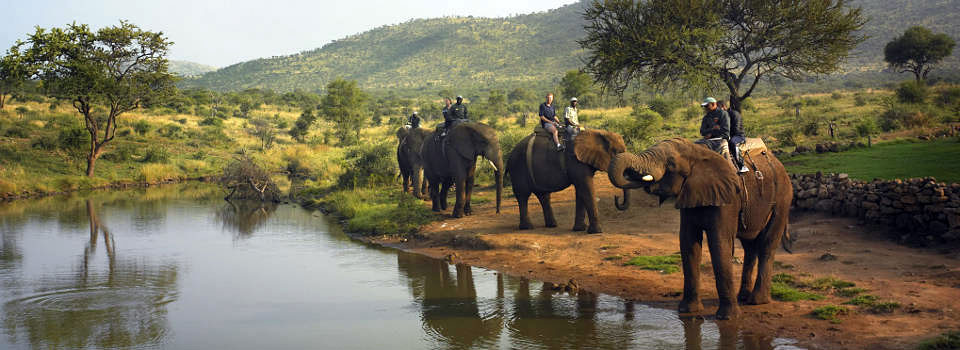Situated in a malaria-free game reserve that is teeming with wildlife and birdlife, a Pilanesberg backpacking safari offers the chance to view an abundance of game species, including the Big 5. The park has become one of the most popular safari destinations after the Kruger National Park, and is ideal for those who prefer a more exclusive safari destination that is within easy reach.
Some of the many reasons to go backpacking Pilanesberg National Park include the following:
Wildlife
Pilanesberg National Park is home to a wide range of wildlife species, including the Big 5 (lion, leopard, elephant, rhino and buffalo). Other game species to be seen on your safari include Wild dog, brown hyena and many other endangered species. A game relocation project named Operation Genesis saw many wildlife species being reintroduced to this once wild region, which gives you the chance to spot a large number of game species on your safari. A typical Pilanesberg safari offers game drives in the morning and evening, while there are also a number of viewing areas throughout the park and at camps.
Scenery
One of the many highlights of Pilanesberg National Park is the chance to view the ancient crater of a 1200 million year old extinct volcano that is found within the park. Surrounded by three ridges, this crater forms a natural amphitheatre that is teeming with wildlife. The park lies between the Kalahari and Lowveld regions, boasting vegetation from both of these very different regions across diverse habitats. Game wanders freely in the reserve, which further adds to the remote atmosphere of this wildlife paradise.
Location
Pilanesberg lies less than two hours away from Johannesburg in the Gauteng Province of South Africa. The park is situated near Sun City, and there is no risk of malaria in this region. This means you will not need to worry about malaria medication on your safari. With scenery spanning as far as 55 000 hectares across the park, the diverse habitats found here vary from rocky outcrops to open grasslands, wooded valleys and thickets.
Birding
With over 350 species of bird found at Pilanesberg, there are excellent bird watching opportunities while on safari. There are many migratory and endemic species found in this region, including birds of prey, water birds and forest bird species. You may even spot rare birds such as Red-eyed Bulbus and Black-eyed Bulbuls if you keep a close eye out on your game drives. The park has a number of bird watching hides that offer excellent viewing points, as well as safe picnic spots to enjoy a peaceful bush picnic. Your safari guide will advise you when it is safe to get out of your safari vehicle – do not attempt to walk through the park alone however as dangerous wildlife walks freely within the park.
Accommodation
There are a number of accommodation options to consider for your safari. Many guests stay at the Black Rhino Lodge, which is the main lodge within the park. With beautiful décor, luxury en-suite bedrooms, excellent service and a number of viewing decks on offer, you will be able to enjoy a luxurious safari experience for the duration of your stay. Most lodges and camps provide activities such as game drives twice a day, which provide plenty of chances to spot game.
For a memorable safari experience just a few hours away from Johannesburg, Pilanesberg has become highly sought-after by travellers all over the world who wish to enjoy all the beauty, scenery and wildlife of this lush region.
-Subscribe to get free updates via RSS or email, follow us on Twitter or find us on Facebook.











I am interested in going out backpacking in Thailand, I’d like to see more of Thailand’s historic places aswell as wildlife and if possible, go camping, or stay in a hoste, or something similarl..
where can I get info about travelling through Tailand, and what advice can you give a first time traveler?
Also, what is a good duration for a backpacking trip in South Africa, provided you wanna see a lot of countries and a lot of places? Would a month be enough?